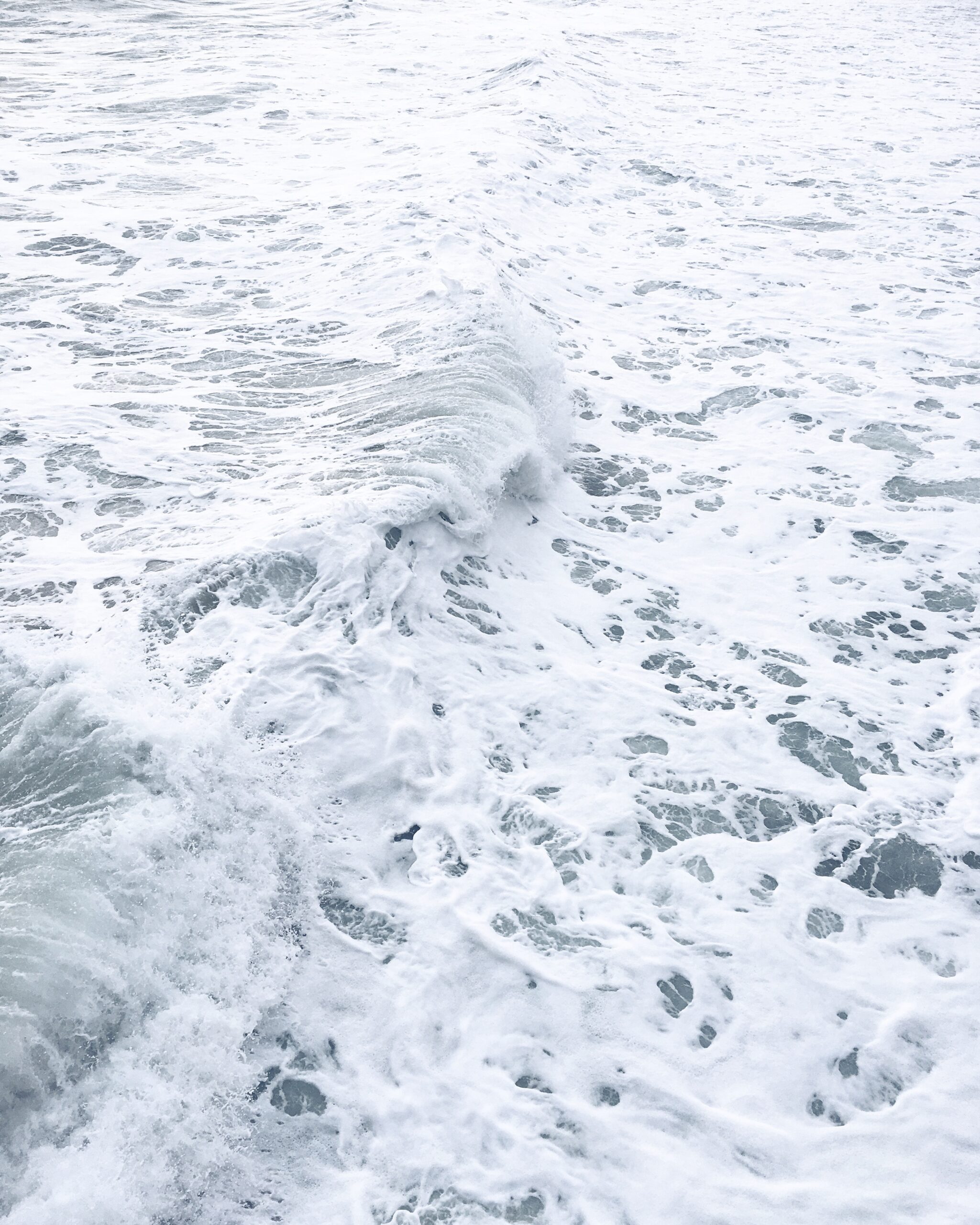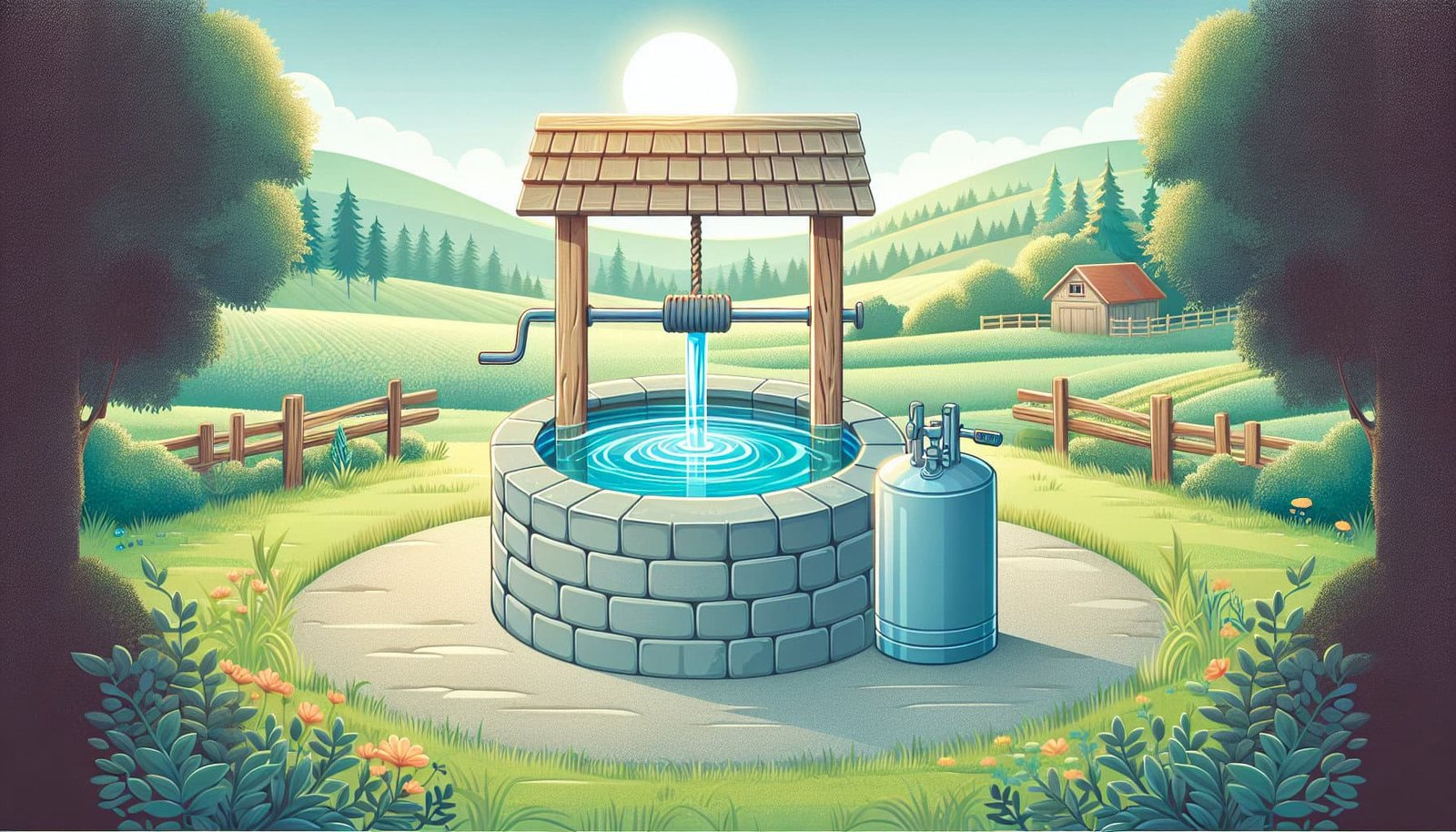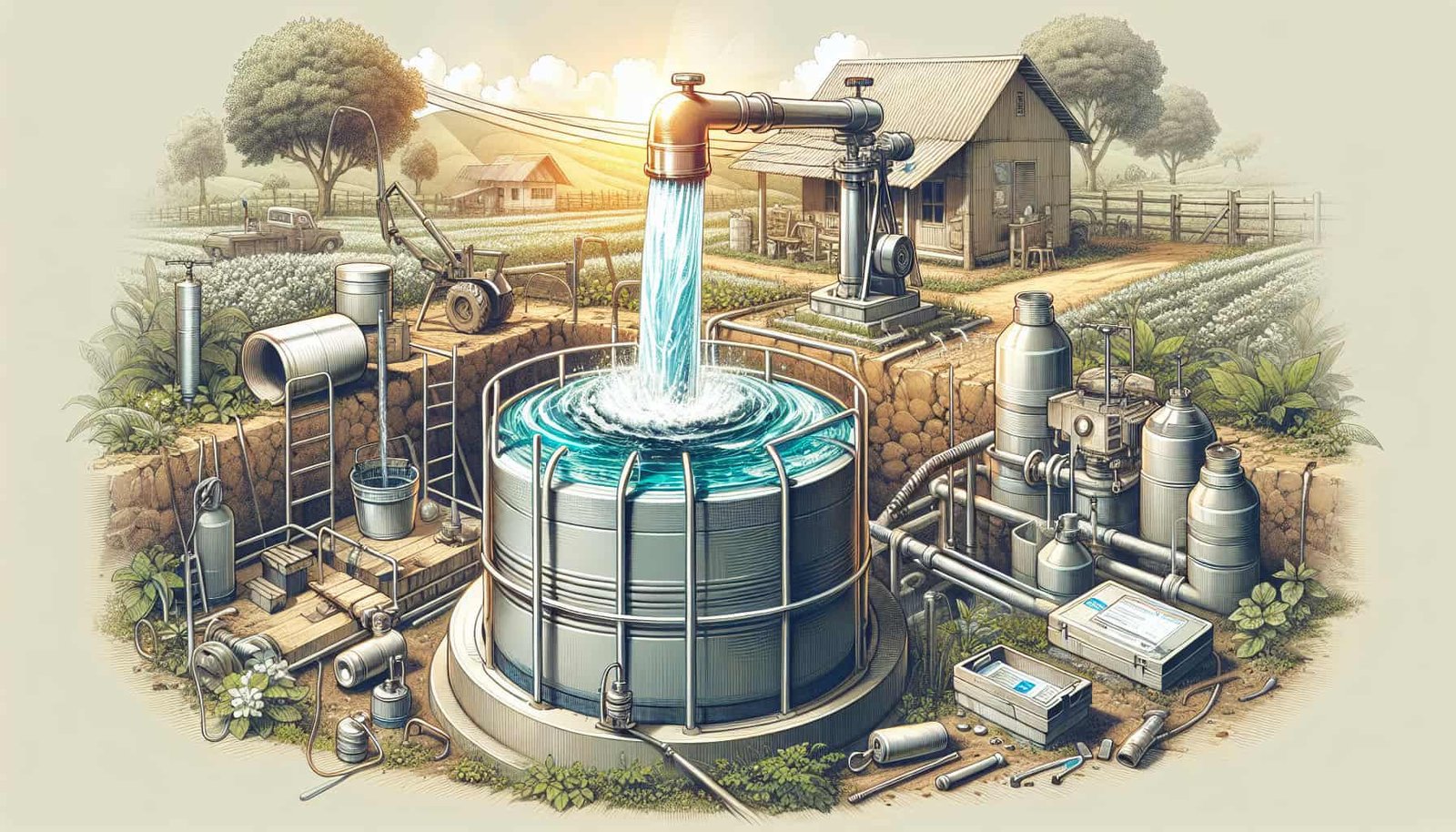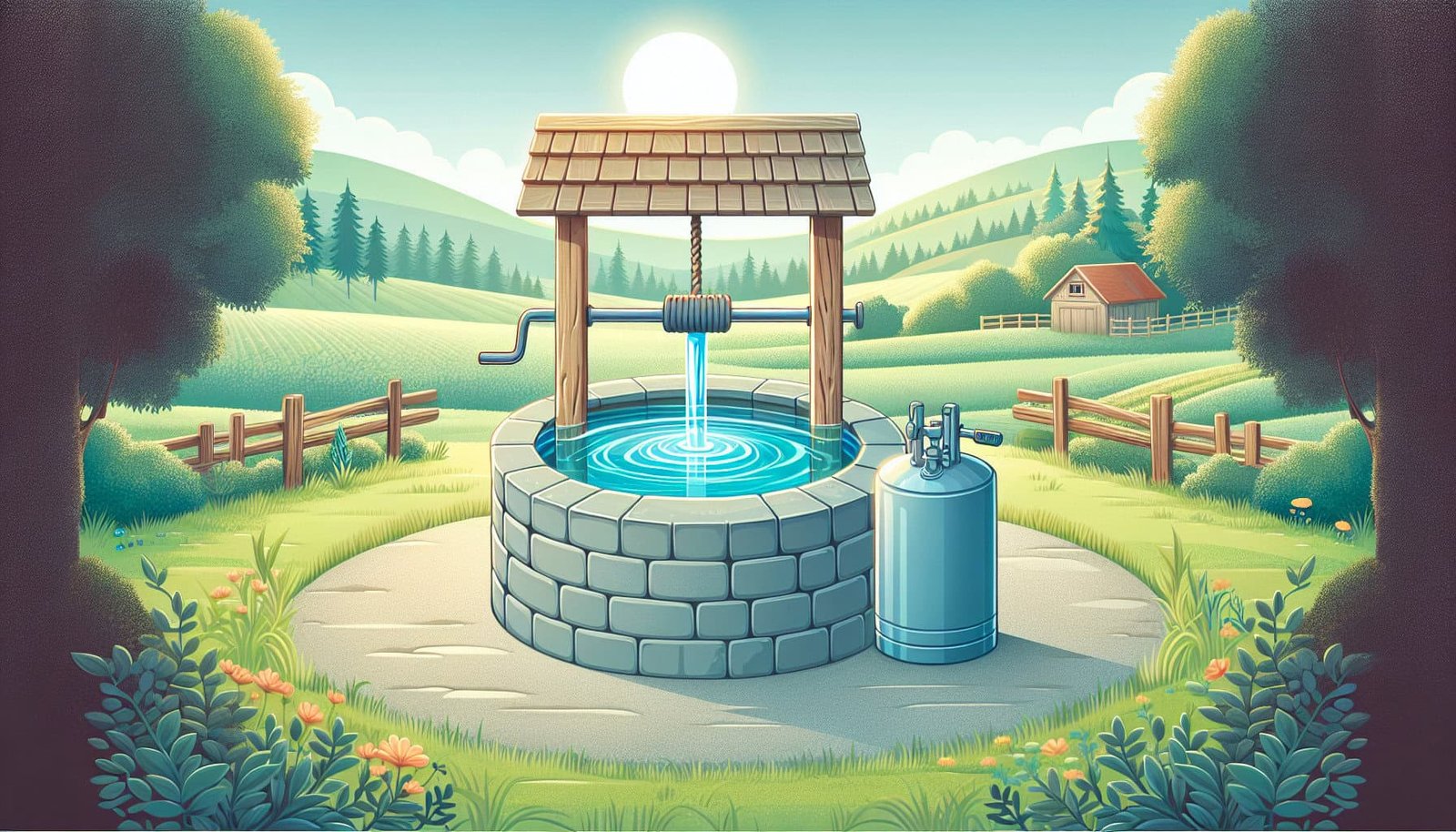If you rely on well water for your household needs, then understanding the safety issues associated with it is crucial. Particularly in regions where well water pressure tank maintenance costs are high, knowing the potential risks is essential. Whether it’s the possibility of bacterial contamination, chemical pollutants, or even the risk of well collapse, being informed about these safety concerns can help you take the necessary precautions and ensure the well-being of yourself and your loved ones. In this article, we will explore the key aspects of safety issues related to well water in regions with high maintenance costs for pressure tanks, empowering you with the knowledge to make informed decisions.

Water Testing
Importance of Water Testing
Water testing is essential for ensuring the safety and quality of the water you consume. Testing your water regularly allows you to identify any potential contaminants that may be present. It helps in maintaining the health and well-being of you and your family. By analyzing the water, you can take appropriate measures to address any issues and make informed decisions regarding water treatment options.
Common Contaminants to Test For
There are several common contaminants that you should test for in your water. These include bacteria, such as E. coli and coliforms, which can cause serious illnesses. Chemical pollutants like pesticides, heavy metals, and nitrates are also a concern. Testing for minerals like lead, arsenic, and fluoride is crucial to ensure the water’s safety for consumption. Additionally, testing for pH levels, hardness, and total dissolved solids (TDS) helps to evaluate the overall quality of your water.
Frequency of Water Testing
The frequency of water testing depends on various factors. It is recommended to test your well water at least once a year for standard water quality parameters. However, if you are experiencing any changes in your water’s taste, color, odor, or if there have been any incidents that may have affected your water source, immediate testing is necessary. Regular testing is particularly important if you live in an area with agricultural or industrial activity, as these can introduce contaminants into the groundwater.
Water Treatment Options
Basic Filtration Systems
Basic filtration systems, such as activated carbon filters, are an excellent first line of defense against common contaminants. They effectively remove impurities like chlorine, sediment, and organic compounds, resulting in improved taste and odor of the water. However, they may not be effective against certain pollutants, like bacteria and heavy metals.
Reverse Osmosis
Reverse osmosis (RO) systems are highly efficient at removing contaminants from water. These systems use a semipermeable membrane to filter out impurities, including bacteria, viruses, pesticides, and nitrates. RO systems are excellent for producing clean and safe drinking water, but they may also remove beneficial minerals and require regular maintenance, such as replacing filters and sanitizing the system.
Water Softeners
Water softeners are specifically designed to address hard water issues caused by high mineral content. These systems use ion exchange processes to remove calcium and magnesium ions, which cause scale buildup in pipes and appliances. By softening the water, you can improve the lifespan and efficiency of your plumbing system and reduce the need for excessive soap and detergents.
UV Sterilization
UV sterilization is a chemical-free method of eliminating bacteria, viruses, and other microorganisms from water. UV light disrupts the DNA of microorganisms, rendering them unable to reproduce and causing their destruction. UV sterilizers are commonly used as a final step in water treatment systems to ensure the water is safe for consumption. However, they do not remove other contaminants, so it is essential to combine UV sterilization with other filtration methods for comprehensive water treatment.
Well Location and Construction
Choosing an Appropriate Well Location
Selecting the right location for your well is crucial to ensure the supply of clean and safe water. It should be positioned away from potential sources of contamination, such as septic systems, livestock operations, and underground storage tanks. The well should be located uphill from potential sources, as groundwater flow typically moves downward. It is advisable to consult a professional well driller or hydrogeologist to determine the best location based on local geology and regulations.
Required Distance from Potential Contaminant Sources
To minimize the risk of contamination, there are specific distance requirements that should be followed when constructing a well. For example, the well should be at least 50 feet away from septic systems and livestock operations. Underground storage tanks should be at least 100 feet away, while landfills and waste disposal sites should have a minimum distance of 250 feet. Adhering to these distance guidelines helps protect your well water from potential contamination sources.
Well Construction Specifications
The construction of a well involves several key specifications to ensure its integrity and functionality. The well casing, typically made of steel or plastic, is installed to prevent surface water from entering the well and protect the well from potential contaminants. Additionally, a well cap is essential to create a seal and prevent any unauthorized access. Well screens are installed to prevent sediment and debris from entering the well while allowing water to flow through. To ensure a properly constructed well, it is best to hire a professional well contractor experienced in local regulations and construction practices.
Well Maintenance
Regular Well Inspections
Regular inspections are essential to identify any potential issues with your well and address them promptly. A professional well inspector can assess the overall condition of the well, including the casing, cap, and screens. They can also check for signs of damage or wear and ensure that the system is functioning properly. Inspections should be conducted at least once a year, although more frequent inspections are recommended if there are any noticeable changes in the water quality or if there have been any incidents that may have affected the well.
Importance of Pump Maintenance
The pump is a critical component of a well system, responsible for drawing water from the ground to supply your household. Regular pump maintenance is crucial to ensure its proper functioning and longevity. This includes checking for any leaks, ensuring proper pressure levels, and monitoring the electrical connections. It is advisable to have a professional well contractor perform regular pump maintenance to prevent any potential issues and address them before they become major problems.
Well Cleaning and Disinfection
Over time, wells can accumulate sediment, mineral deposits, and bacterial growth, which can impact water quality. Regular cleaning and disinfection of the well are necessary to remove these contaminants and maintain a safe water supply. A professional well contractor can perform thorough cleaning and disinfection using appropriate methods and disinfectants. The frequency of well cleaning depends on factors such as water quality, usage, and environmental conditions.

Water Contamination Risks
Surface Water Contamination
Surface water contamination occurs when pollutants infiltrate the groundwater from nearby surface water sources such as lakes, rivers, or ponds. This can be due to inadequate well construction, heavy rainfall causing runoff, or nearby agricultural or industrial activities. Surface water contamination poses a risk of introducing bacteria, pesticides, fertilizers, and other pollutants into your well water, making water testing and appropriate treatment crucial.
Subsurface Contamination
Subsurface contamination occurs when pollutants are released directly into the groundwater. This can happen due to underground storage tank leaks, improper waste disposal, or industrial activities. Contaminants like petroleum products, solvents, heavy metals, and chemicals can infiltrate the groundwater and pose serious health risks. Proper well construction, regular testing, and implementing suitable water treatment methods are essential to mitigate the risks associated with subsurface contamination.
Agricultural Runoff
Agricultural runoff is a significant source of water contamination, especially in rural areas. Pesticides, fertilizers, and animal waste can seep into the groundwater, affecting the quality and safety of your well water. It is important to be aware of any agricultural activities in your vicinity and take necessary precautions such as regular water monitoring, filtration systems, and considering appropriate water treatment methods.
Industrial Contaminants
Industrial activities such as manufacturing, mining, and waste disposal can contribute to water contamination. Chemicals, heavy metals, and other pollutants can enter the groundwater through improper waste management practices or accidental spills. If you live near industrial areas, it is crucial to regularly test your well water for potential contaminants and explore suitable treatment options to ensure the safety of your drinking water.
Contamination Sources
Septic Systems
Improperly maintained or malfunctioning septic systems can pose a significant risk of contaminating well water. If the septic system is located too close to the well or if it is not adequately maintained, bacteria, viruses, and other harmful microorganisms can infiltrate the groundwater and contaminate your well water. Regular inspections, proper maintenance, and adherence to local regulations regarding septic system installation and operation are essential to minimize contamination risks.
Underground Storage Tanks
Underground storage tanks (USTs) are commonly used to store petroleum products or other hazardous materials. Leaks or spills from USTs can result in serious contamination of the surrounding soil and groundwater. If your well is located in close proximity to an UST, there is a significant risk of contamination. Regular monitoring, inspections, and compliance with UST regulations are necessary to prevent and address potential contamination issues.
Landfills and Waste Disposal Sites
Landfills and waste disposal sites can release hazardous chemicals, toxins, and pollutants into the environment, including the groundwater. If your well is located near a landfill or waste disposal site, there is a higher likelihood of contamination. It is crucial to stay informed about any waste management activities in your area and regularly test your well water to ensure it is not affected by potential contaminants.
Livestock Operations
Livestock operations, especially concentrated animal feeding operations (CAFOs), can contribute to water contamination through the discharge of animal waste and the excessive use of fertilizers and pesticides. If your well is located near livestock operations, there is a risk of bacterial contamination and nitrate pollution. Regular testing, implementing appropriate setbacks, and considering water treatment options are necessary to safeguard your well water from potential contamination.

Health Risks
Bacterial Infections
Bacteria such as E. coli and coliforms, if present in your well water, can cause severe gastrointestinal illnesses. Symptoms may include diarrhea, vomiting, and abdominal cramps. These bacterial infections can be particularly dangerous for children, the elderly, and individuals with weakened immune systems. Regular water testing and the implementation of appropriate water treatment methods, such as disinfection, are crucial to prevent bacterial contamination and protect your health.
Chemical Poisoning
Chemical pollutants, such as pesticides, solvents, and industrial chemicals, can infiltrate your well water and pose a risk of chemical poisoning. Prolonged exposure to these contaminants can lead to various health issues, including neurological disorders, reproductive problems, and certain types of cancer. Regular water testing, appropriate well construction, and the use of suitable water treatment options, such as activated carbon filters or reverse osmosis systems, are essential to minimize the risk of chemical poisoning.
Toxic Metals
Toxic metals like lead, arsenic, and mercury can find their way into your well water through various sources, including natural deposits, industrial activities, and outdated plumbing systems. These metals can pose severe health risks, particularly for children and pregnant women. Regular testing for toxic metals and implementing appropriate water treatment methods, such as activated carbon filters or reverse osmosis systems, is crucial to ensure the safety of your drinking water.
Nitrates and Nitrites
Nitrates and nitrites are common contaminants in agricultural areas and can enter your well water through runoff or leaching from fertilizers and animal waste. These compounds can be harmful, especially for infants and pregnant women, as they can interfere with the oxygen-carrying capacity of the blood, leading to a condition called methemoglobinemia or “blue baby syndrome.” Regular water testing and appropriate treatment methods, such as nitrate-specific filters or reverse osmosis systems, are necessary to mitigate the risks associated with nitrate and nitrite contamination.
Protective Measures
Well Cap and Seal
Properly installing and maintaining a well cap and seal is crucial to prevent the entry of contaminants into your well. The cap should fit tightly and have a vent to allow for adequate air circulation. Regular inspections should be conducted to ensure the cap and seal are intact and in good condition. If any damage or deterioration is observed, immediate repairs should be undertaken to maintain the integrity of the well and protect the water source.
Avoiding Chemical Contamination
To minimize the risk of chemical contamination, it is essential to handle and store chemicals properly. Avoid using or storing hazardous substances near your well or septic system. Follow the manufacturer’s instructions for safe use, storage, and disposal of chemicals. It is advisable to use non-toxic alternatives whenever possible and consider professional assistance for removing or disposing of hazardous substances.
Proper Waste Disposal
Appropriate waste disposal practices are essential to prevent contamination of the groundwater. Avoid dumping or releasing any waste, including household chemicals, directly into the environment. Follow local regulations regarding waste disposal and recycling. Properly maintain and empty septic systems according to recommended schedules. By practicing responsible waste disposal, you can help protect the quality and safety of your well water.
Testing Private Wells for Neighbors
In close-knit communities with private wells, it is important to encourage regular water testing among neighbors. Collaborating with your neighbors to test well water can provide a more comprehensive understanding of the local water quality. It can help identify any patterns or trends in contamination and prompt collective action if necessary. By working together, you can ensure the well-being of the entire community and promote a safer water supply for everyone.

Know Your Local Regulations
Local Well Water Standards
It is essential to be aware of the local well water standards and regulations in your area. These standards define the acceptable levels of various contaminants in the water and set guidelines for testing and treatment. Familiarizing yourself with the regulations helps you understand the potential risks and take appropriate measures to ensure compliance and protect your health.
Permit Requirements
In some regions, drilling a new well or performing major repairs may require obtaining permits from the local authorities. Permit requirements ensure that the well is constructed and maintained in accordance with local regulations. If you are planning to install a new well or make significant modifications to an existing one, it is crucial to check the permit requirements and obtain the necessary approvals before proceeding.
Annual Reporting
In certain areas, well owners may be required to submit annual reports regarding their well water quality and maintenance. These reports help authorities monitor the condition of private wells and take necessary actions to ensure public health and safety. Compliance with annual reporting requirements enables a better understanding of potential risks and facilitates the implementation of appropriate measures to protect the community’s water resources.
Financial Considerations
Well Maintenance Costs
Maintaining a well incurs certain costs, including regular inspections, pump maintenance, well cleaning, and other necessary services. The specific costs associated with well maintenance vary depending on factors such as the type of well, water quality, geographic location, and the availability of local professionals. It is important to budget for these expenses and ensure that regular well maintenance is included in your overall household expenses.
Water Treatment System Expenses
The cost of implementing water treatment systems depends on the type of treatment required, the specific contaminants present, and the size and complexity of the system. Basic filtration systems, such as activated carbon filters, are generally more affordable compared to more advanced systems like reverse osmosis. UV sterilization systems can also involve higher upfront costs. It is important to research and consider the long-term expenses, including filter replacements and maintenance, when evaluating water treatment options.
Potential Health-Related Costs
Failing to address and mitigate water contamination risks can lead to significant health-related costs. Treating bacterial infections, chemical poisoning, or other waterborne illnesses can incur medical expenses, including doctor visits, laboratory tests, and medication. Additionally, long-term health effects resulting from exposure to contaminants can have lifelong consequences. By proactively addressing water quality issues through regular testing, appropriate treatment, and protective measures, you can potentially avoid or minimize these health-related costs.
In conclusion, well water safety is of utmost importance for the health and well-being of you and your family. Regular water testing, proper well maintenance, and the implementation of suitable treatment methods are essential for ensuring the cleanliness and safety of your well water. By understanding the potential contaminants, contamination sources, and associated health risks, you can make informed decisions and take appropriate measures to protect your water supply. Remember to follow local regulations, stay vigilant about potential contamination sources, and practice responsible waste management to maintain the quality of your well water.


